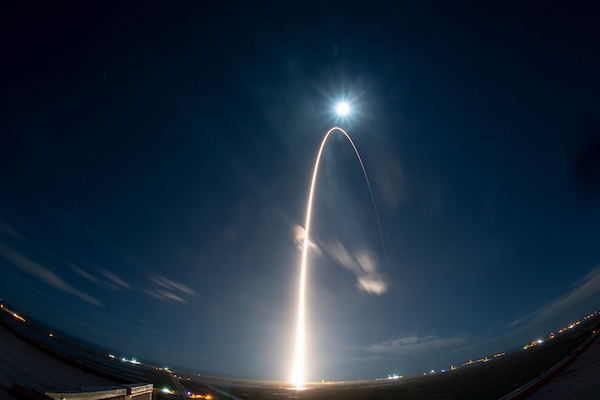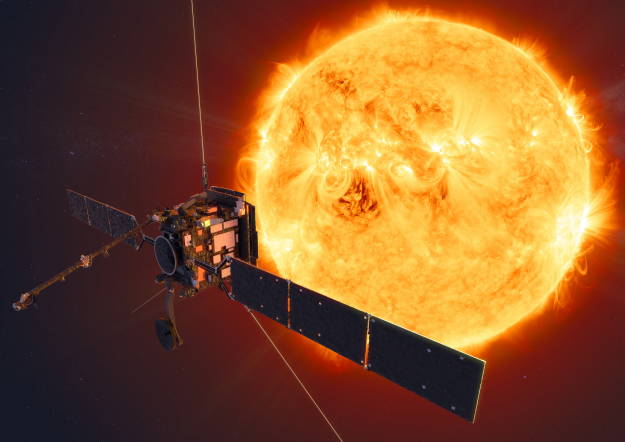Met Office
|
|
Space mission blasts off for the sun
Blog posted by: Met Office Press Office, 11 February, 2020.
Solar Orbiter blasted off from Cape Canaveral at 04:03 GMT this morning. Solar Orbiter is a European Space Agency (ESA) science mission, with support from NASA in the US, that will provide data to help improve our understanding of the Sun.
Solar Orbiter liftoff. Credit: ESA–S. Corvaja
Why is it important to understand the Sun?
The Sun, which is vital to sustaining life on our planet, is also the source of what we know as ‘Space Weather’. Explosive bursts of energy & matter from the Sun presents a risk to the technology that we rely upon on a day-to-day basis. Severe solar storms in 1989 and 2003, caused power blackouts in Quebec Province, Canada and Malmo, Sweden respectively and can disrupt space based services that we all rely on, whether it be communications, GPS signals to our Satnavs, or the industries that use these services such as aviation.
It’s a fantastic time to be a space weather scientist or solar physicist with two missions Parker Solar Probe and Solar Orbiter operating at the same time and generating new data from which we can improve our understanding of the Sun.
Solar Orbiter will give us a glimpse of the Sun’s poles for the first time, which is expected to help us understand the 11-year solar cycle which drives the frequency of explosive solar events that are so important for space weather.
At a time when the importance of space, both as a growing economy and also the impact of a loss of space-enabled services, is increasingly being recognised by the UK Government, it is great to see UK organisations playing such key roles in the mission. Imperial College London, UCL Mullard Space Science Laboratory (UCL-MSSL) and the Science and Technology facilities Council’s RAL Space (STFC-RAL Space) led international teams to develop and build three instruments while UCL are a major contributor to a fourth. Airbus in Stevenage have designed and built the spacecraft that will be required to withstand the exceptional heat from the Sun as the spacecraft gets as close as 26 million miles of the Sun’s ‘surface’ (the Earth is 93 million miles from the Sun!).
Although it will take many years, the knowledge gained from these two missions will generate new scientific understanding of the Sun which will ultimately improve space weather forecasts.
Artist’s impression of Solar Orbiter. Credit: ESA/ATG medialab
What’s next for space weather missions?
At the ESA Council of Minister’s Meeting last December, funding was approved to take forward a dedicated space weather mission to the Lagrange 5 (L5) location to provide a permanent side-on view of the Sun-Earth line to maintain, and improve, our ability to predict the arrival time of the most impactful type of space weather, coronal mass ejections (CMEs). CMEs give rise to geomagnetic storms at Earth which give us beautiful bright aurora (Northern & Southern lights) but also put power grids at risk, as evidenced in 1989 & 2003 events.
The ESA L5 mission is very much being led by the UK, with Airbus, STFC-RAL Space and UCL-MSSL leading the mission study, remote sensing instruments and in-situ instruments respectively with European partners. Here at the Met Office, we’re engaged in defining the user requirements for the mission to ensure it delivers the data required to improve space weather forecasts. This will be quite a different mission to Parker Solar Probe and Solar Orbiter as the mission is less about gaining new knowledge and more about providing the vital data we know we need for accurate space weather forecasts.
Original article link: https://blog.metoffice.gov.uk/
.gif)



